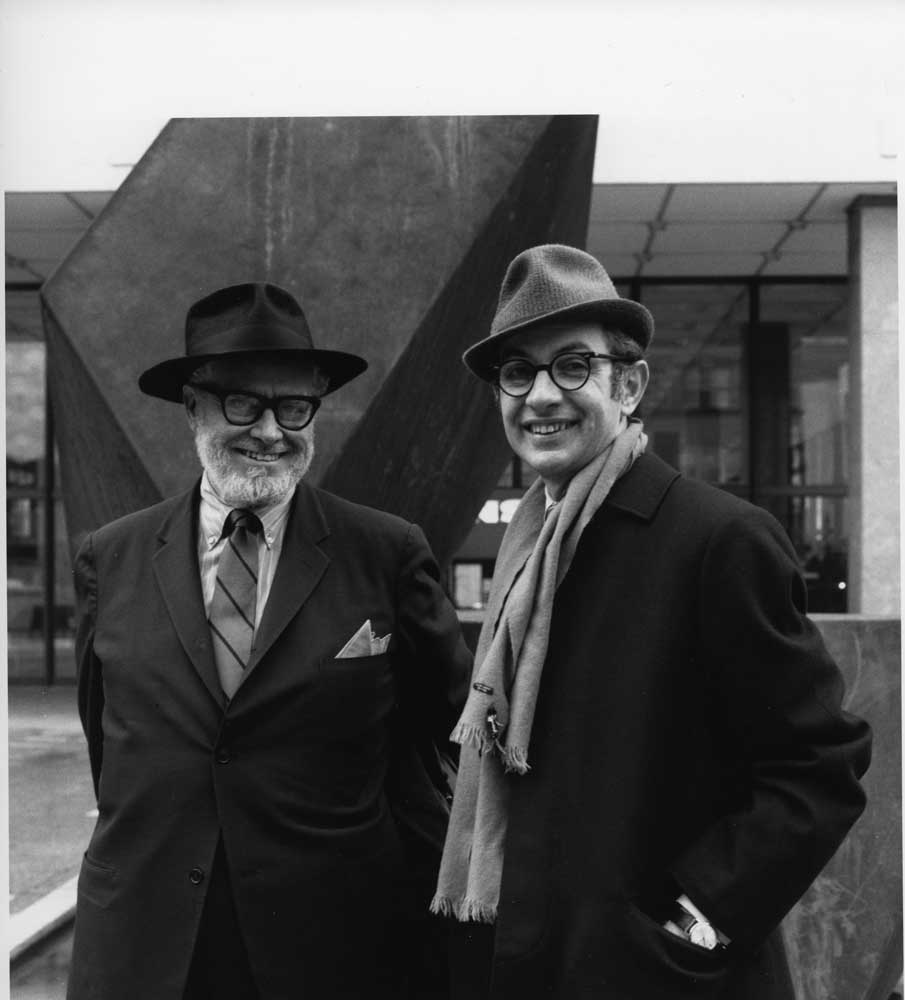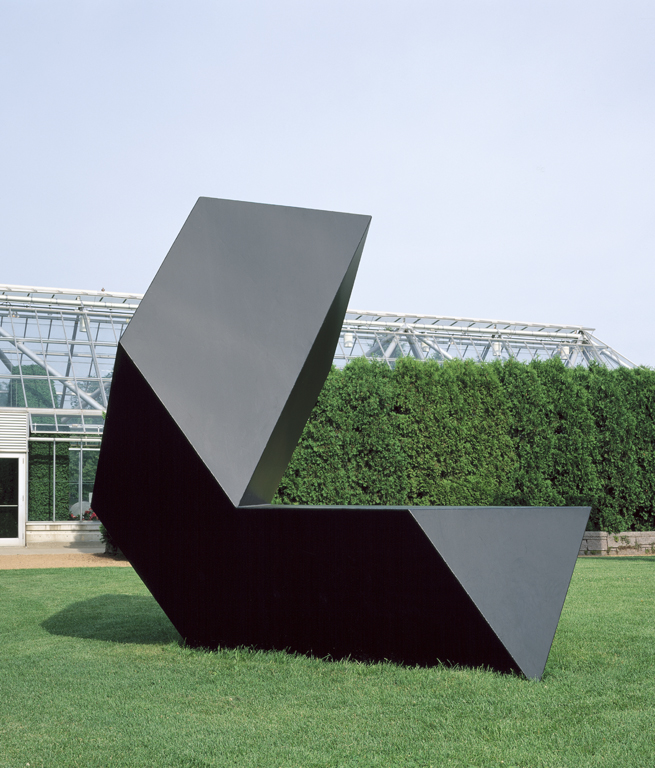
On the centennial of Tony Smith’s birth, Big Red & Shiny looks at the Minimalist sculptor’s 1965 work Amaryllis, a version of which was reinstalled last week outside the Wadsworth Atheneum. The 7,000-pound sculpture, made of painted Cor-Ten steel, was created in an edition of three: the Wadsworth and the Met each own one, while the Walker owns the third, which is on view in the Minneapolis Sculpture Garden. BR&S’s John Pyper describes the work:
If the flower is to be found in this sculpture, it hides its petals well. The Amaryllis is a cold weather flower that blooms readily and is associated through Ovid with devotion. Emerging out of the solid base (metaphorically its bulb), this metallic flower curves, possibly towards the sun. Created of strong triangular shapes, some truncated, the sculpture seems stable and solidly connected on the ground at some angles and balanced on a knife’s edge from others. The raised surface steadily grows out of its base. Depending on the angle, it forms an optical illusion, where it can seem shorter or taller as you circle it.
Born September 23, 1912, Smith passed away in 1980, but his legacy can be witnessed both with Amaryllis in the garden and in the galleries. He was patriarch of a creative family: his wife Jane was an opera singer, and two of his daughters, Kiki and Seton, are visual artists. Kiki Smith’s Kitchen is currently on view in the exhibition Midnight Party.

Get Walker Reader in your inbox. Sign up to receive first word about our original videos, commissioned essays, curatorial perspectives, and artist interviews.